This Dreamy Veggie Garden Overflows with DIY Ideas
A pair of beginners share how they did it on a budget.
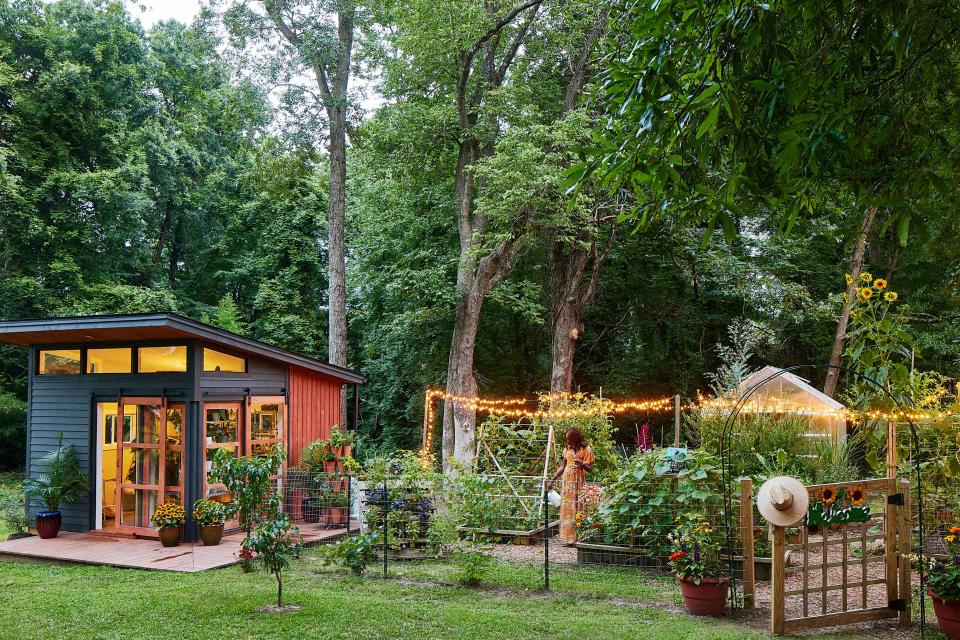
Hector Sanchez
When Ashlie and Tyler Thomas started gardening in 2019 on their plot of land in Graham, North Carolina, it was an easy partnership. "I knew the science and theory of growing things," says Ashlie, who has degrees in biology and chemistry. With a background in construction, her husband "had that practical knowledge." Together, they've transformed their oak-studded yard into an oasis overflowing with fruits and vegetables.
Though they had little planting experience at the time, they dove right in. With knowledge gleaned from books, their local agricultural extension, and the gardeners in their families, they began experimenting with different vegetables. Today, they grow a wild abundance of crops, including leafy greens, roots and tubers, and a whole host of fruits. Here's how they get a big bounty throughout the growing season—and make it last all year.
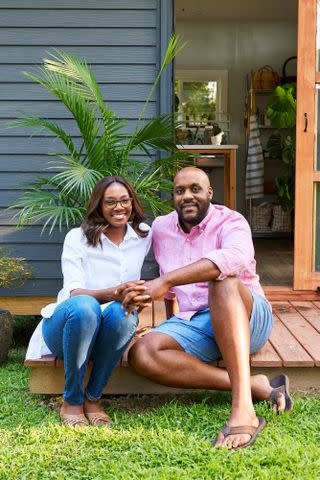
Hector Sanchez
Inspiring Gardeners Everywhere
A health coach and grad student in nutritional science by day, Ashlie Thomas has also become a role model for new gardeners. "Access to nutritious food is so challenging for so many people," she says. "I thought, What if we could teach other people to do what we're doing using the space they have?" To that end, she's spent the last few years documenting her garden on Instagram (@the.mocha.gardener). She also recently published her first book, How to Become a Gardener: Find Empowerment in Creating Your Own Food Security (Cool Springs Press).
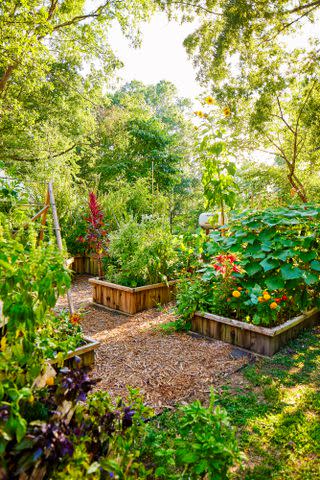
Hector Sanchez
The Raised Bed Gardens
Tyler built 11 raised beds, allowing the couple to control the soil and dodge the root systems of the mature oaks on the property. But first, the couple watched the sunlight for months to figure out where to situate their raised beds to ensure they would get eight hours of sun a day. Tyler built the beds out of recycled 2x4s and fencing picket panels to save money.
Ashlie created a database to track where she plants seeds year to year, record which plants do best in which locations, and plan crop rotation to discourage disease. "This method keeps me from getting overwhelmed when it's time to plan where to plant," she says.
Cucumbers and other vining fruits and veggies, such as squash, small melons, and snap peas, grow on trellises, both for space efficiency and because air circulation discourages disease, including powdery mildew. Adding pollinator-friendly flowers, such as salvias, marigolds, and zinnias, encourages bees and butterflies to visit and pollinate the veggies.
Related: What Are the Best Vegetables to Grow to Save Money on Groceries?
Tyler built most of the trellises himself, using recycled wood. "Sometimes we opt for building over purchasing because we are able to customize things to our own aesthetic," says Ashlie. "Also, it’s significantly more affordable to do so."
As the garden evolved, Ashlie’s palate did too. “I didn’t used to like tomatoes, but I only had experience with commercial ones,” she says. “So I grew as many varieties as I could so I could see if all tomatoes were horrible.” Sweet, orange-yellow ‘Sungold’ and deeply colored ‘Cherokee Purple’ tomatoes made her a convert.
""You’re not just cultivating a space—you’re cultivating yourself.”"
-Ashlie Thomas
"Nighttime gardening is my favorite because it's simply lovely and calming–the world is sleeping, the atmosphere is quiet, and the temperatures are comfortable," Ashlie says. Under the string lights, Ashlie uses evening hours to pick slugs and other pests off the plants.
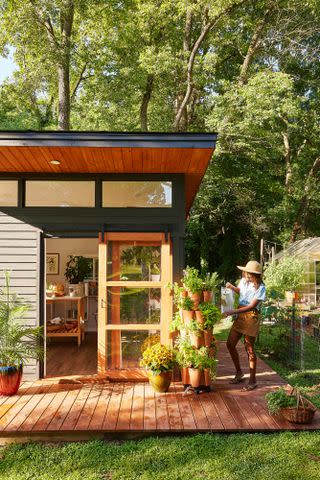
Hector Sanchez
DIY Shed
Tyler built the garden shed on a budget: The shiplap siding came from Facebook Marketplace, the flooring was on sale at a hardware store, and the lighting and solar panel equipment came from Amazon. The couple splurged on full insulation, making the shed comfortable year-round for houseplants and humans.
On the deck, a Green Stalk Garden vertical planter lets the couple grow a ton of herbs— including thyme, oregano, sweet and Thai basil, parsley, and rosemary—in a small footprint.
While the couple eat much of their bounty fresh, Ashlie also processes fruits and vegetables in the shed that Tyler built. The shed is outfitted with a sink and gear for when Ashlie cans pickles and she distills essential oils; she also hangs herbs to dry from the high ceiling. (The shed works overtime as a yoga space.)
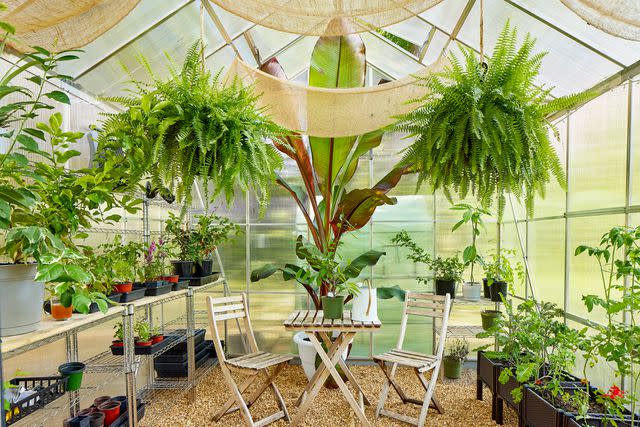
Hector Sanchez
There's also a small greenhouse, where Ashlie keeps tropical fruit plants and starts seeds in the cool months. She's learned a few lessons over the years: making sure there's adequate ventilation, adding a heater during the winter, and reinforcing the framing so the structure itself can handle any storms. They thoroughly clean the space twice a year to keep mildew on the panels at bay.
Between the greenhouse, the shed, and the garden, the couple is able to keep gardening, learning, and sharing their experience year round. “Documenting this on Instagram allows me to keep track of the journey,” she says. “It’s a matter of being able to reflect on the process.”
For more Better Homes & Gardens news, make sure to sign up for our newsletter!
Read the original article on Better Homes & Gardens.

